Overview of Lobster Tails
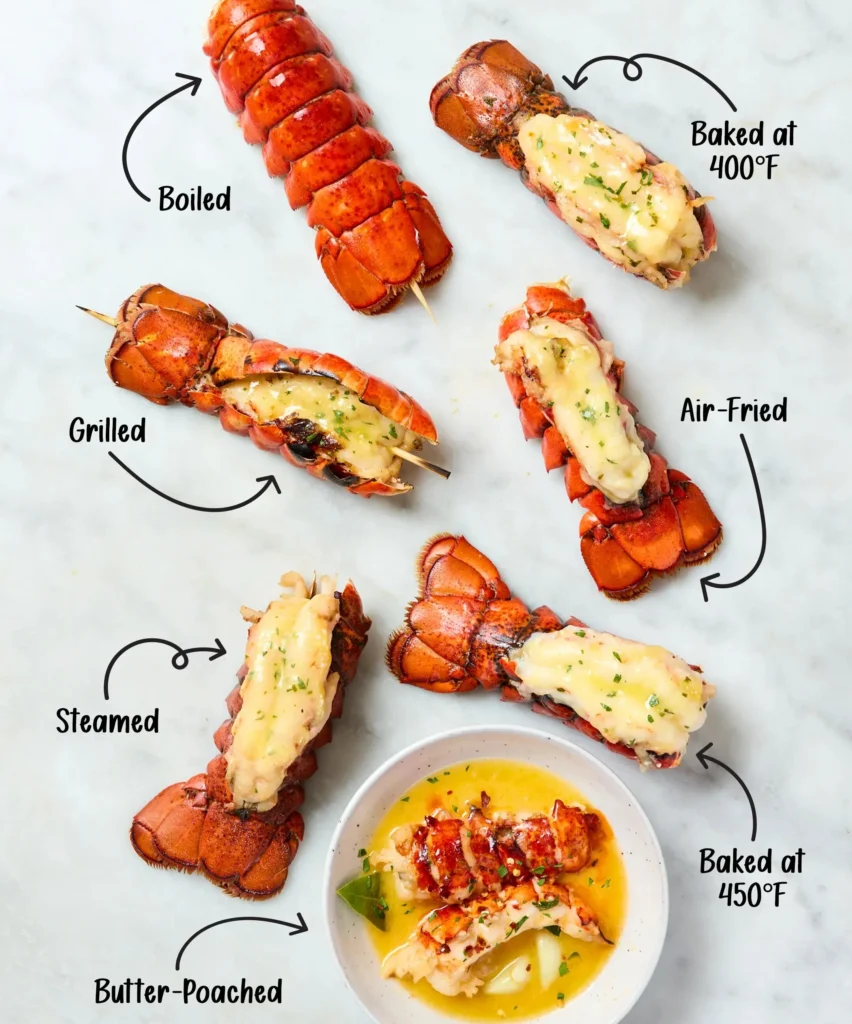
Lobster tails are some of the most relished seafood delicacies as they are very sweet, tender, and versatile in different culinary uses. They are typically obtained from two major kinds of lobsters, cold water lobsters, and warm water lobsters; the former are much tastier and may be prepared using many culinary ways. Cold-water lobsters are generally better; the meat is firmer and sweeter, hence often a favorite for most seafood aficionados. Warm water lobsters will be a bit softer and less intense in flavor.
Size and quality are two factors that significantly help in buying lobster tails. Lobster tails differ in size, usually measured in ounces, and the larger tail yields more meat. Freshness is also a factor, so the newer tails are going to have better flavor and texture. If you happen to be preparing lobster tails for a special occasion or just a casual dinner, understanding their characteristics and the best techniques to cook them will be what makes it happen for that delicious meal.
Nutritional Benefits of Lobster Tails
This lobster meal is not only tasty but also valuable due to the nutritional benefits this lobster entices. Lobster tails are good sources of high-quality proteins that are used to repair muscles as well as for general muscle health. A typical lobster tail serving contains around 20 grams of protein, making it perfect for use in diets where individuals want to increase their protein levels without really high-calorie levels.
Additionally, lobster tails are rich in omega-3 fatty acids, which promote heart health, reduce inflammation in the body, and help preserve one’s brain function. They also contain essential vitamins and minerals like vitamin B12, zinc, and selenium, which contribute to immune function. Hence, these tail tips represent a nutritious supplement for a well-rounded diet, especially if prepared in healthier ways.
Live Lobster vs. Lobster Tails
There are several factors to consider when choosing between live lobsters and lobster tails. Live lobsters present an experience for the seafood lover-the possibility to start from raw. However, cooking live lobsters can be intimidating for some since it comes with proper handling and cooking procedures. Live lobsters can possess such freshness and flavor that a more robust seafood experience is developed.
On the other hand, lobster tails come as an all-friendly and stress-free option. They are also available, frozen or fresh, and cooked without having the complex elements that are associated with live lobsters. Lobster tails can be prepared in multiple ways while being more affordable than other options; thus, they become an excellent choice for home cooks. Ultimately, it depends on how well one wants to buy and experience eating a lobster tail, based on personal preference, experience, and desirable culinary outcomes.
How to Buy Lobster Tails
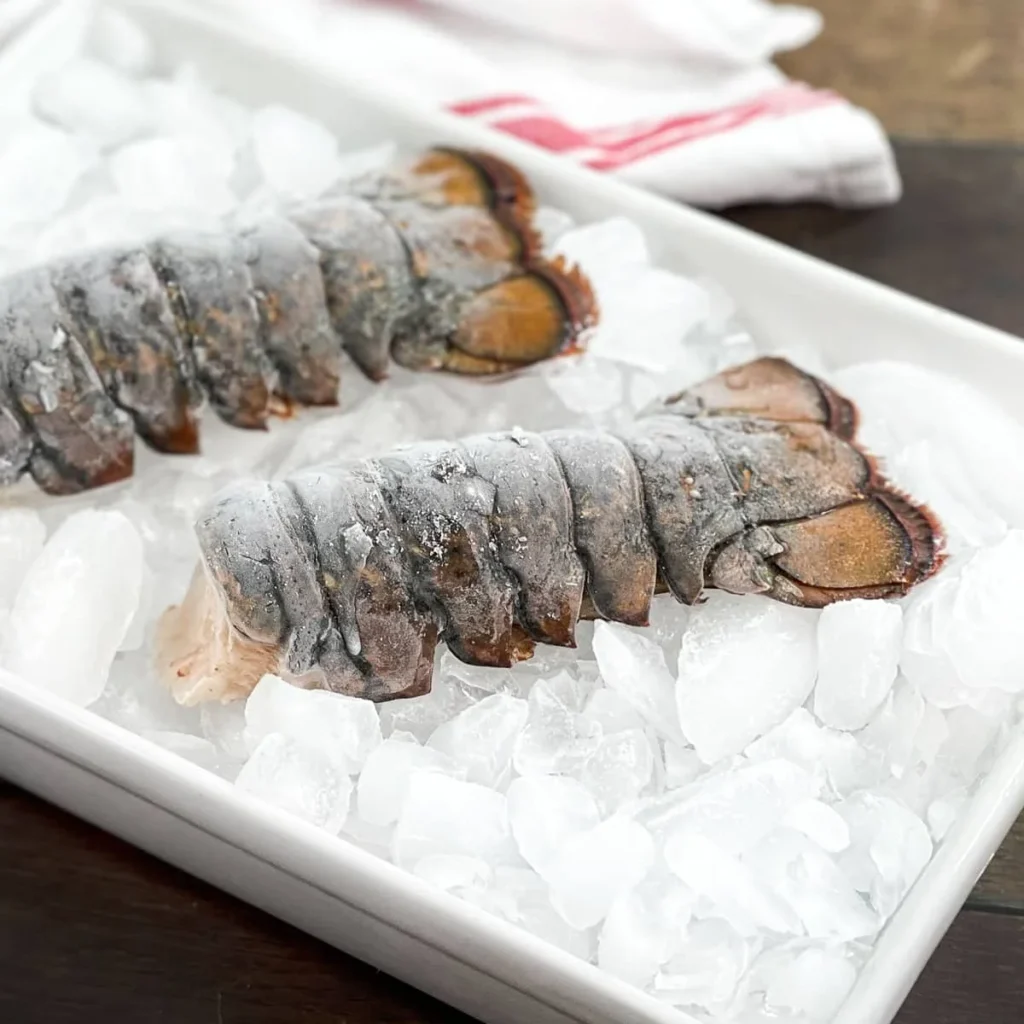
Lobster tails to purchase and concerns for the best quality: Firm feel and a fresh ocean odor are preferable, avoiding lobster with discoloration, fecal or oily smells, or flaccid lobsters. You can also desire fresh tails or frozen tails. Fresh lobster tails are usually sold in the seafood market, and one pays a bit of extra money for such. Frozen ones can be found in nearly any grocery store and are more convenient.
If you do use frozen lobster tails, make sure they are well packaged and have no ice crystals in them, which is an indicator of freezer burn. Also, check on sustainable sources- the better the fishing practices, the better it is for marine ecosystems. If you pay attention to details such as this, you will be having a nice lobster meal and contributing to sustainable fishing at the same time.
A few words about lobster imitations
Imitation lobster is a product often prepared from surimi, or a processed form of fish, and is thus less expensive for eating than its naturally constituted counterpart. Although imitation lobster may resemble in appearance and texture its authentic namesake, it also lacks the flavor of the latter, and most importantly, does not deliver the nutritional value discovered in the real product lobster tails. If you want to have a seafood experience, you have to pony up the extra cash for real lobster tails. However, imitation lobster can still be pretty fun to be an ingredient for some recipes – such as with seafood salads or tacos – since the taste is compensated with the use of other ingredients.
Knowing which is imitation and real will help you decide wisely based on your goals as well as budget. While imitation lobster may tickle the cravings of having a casual dish, nothing will compare to the delicious taste and texture served with freshly cooked lobster tails.
Why You’re Going to Love This Lobster Tail Recipe

In a nutshell, incredibly tender, yet incredibly flavorful lobster tails
The rosy results of lobster tail come from the delight of preparing it right and cooking it tender and flavorsome. Juicy, meaty, and full of richness, the lobster tail meat is just such a texture to give in to in the mouth. The natural sweetness of the lobster pops through its flavor at each bite, making every dining experience ecstatic when cooked properly. Some different recipes presented here highlight various ways to ensure that your lobster remains intact, juicy, and flavorful, whether you boil, grill, or broil it.
Simple, foolproof methods for fresh and frozen lobster
The most attractive feature of cooking lobster tails is the ease of the methods. Be it fresh or frozen lobster tails, the techniques given in this recipe are easy to work with and give great results. It is from boiling to broiling that each has unique advantages; so you may choose the one that best fits your cooking style and occasion. This versatility means you do not have to undertake complicated preparation or specialized skills for some of the delectable lobster tail dishes.
Versatile cooking methods to suit any occasion
Some cooking lobster tails can make an otherwise regular meal special, so it is perfect for most occasions. Lobster tails make any dinner dinner party fancy, be it a special event celebration or just because a night in is called for. This flexibility allows for good cooking preparation that accommodates the mood and atmosphere. For instance, grilling comes with smoky flavors on lobster that are so appropriate for summer barbecues, and if you want a quick weeknight dinner, then the ideal method would be broiling. With all this diversity, lobster tails can easily be the king of your kitchen.
How to Cook Lobster Tails
Steamed Lobster Tails
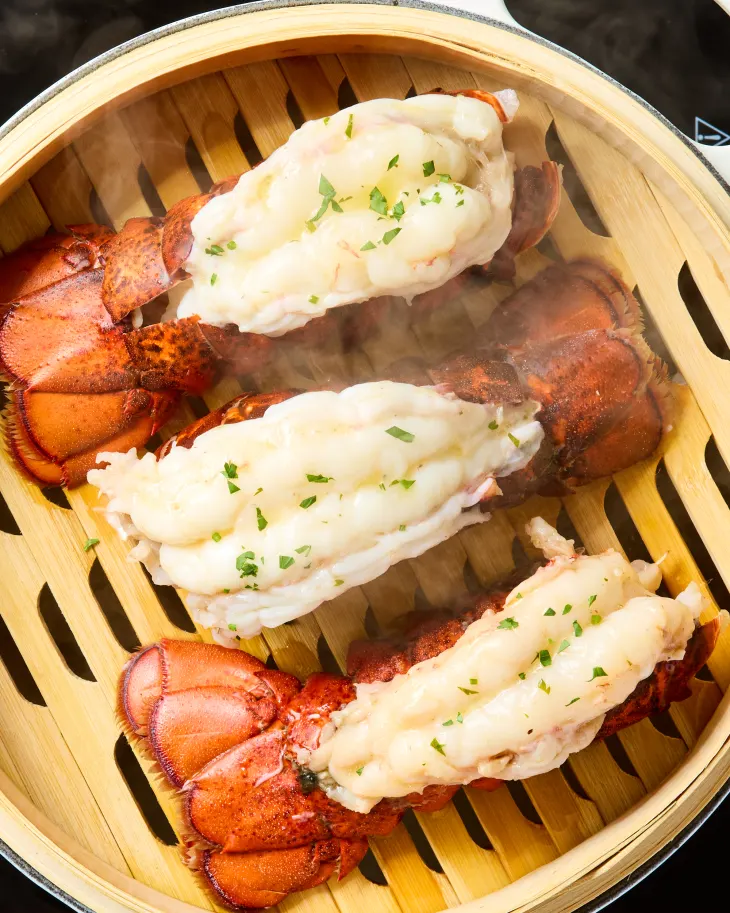
Steaming is a good way of cooking lobster tails: it is quick and yields tender, delicious meat. Here’s how to steam lobster tails. Place the lobster tail in a big pot or steamer, and make sure that the water level reaches the level of the lobster tails. Season the water with salt. When it reaches a rolling boil, add the lobster tails one at a time. Cooking times will vary with the size of the tails, but a good rule of thumb for 5-6-ounce tails is about 5 minutes.
To check if it’s done, the meat should become white and hard. After cooking, then transfer these tails immediately to an ice bath to arrest cooking and retain their texture. For those who want an easy method that always gives excellent results with less hassle, boiling is an ideal way.
Grilled Lobster Tails

Grilling lobster tails should be done on a summer cookout; it’s very fantastic over a smoky flavor. Prepare the lobster tail by butterflying them to ensure that they cook evenly, and season well. Butterflying involves cutting the top of the shell lengthwise without really cutting into it and being gentle in separating the meat from the shell, keeping the end attached. Grill on medium-high heat and brush the lobster meat with butter and your favorite seasonings.
Put the lobster tails shell-side down on the grill and cook for about 6-8 minutes, or until the shells turn bright orange and the meat is opaque. The grilling not only enhances the flavor but also gives a nice charred exterior, making it look impressive when presented.
Cook Lobster Tails by Broiling

Quickly and efficiently, the lobster tails can be cooked under the broiler to achieve a caramelized surface. For broiling lobster tails: Preheat your broiler. Butterfly the tails, just as described above. Place the lobster tails on a baking sheet, flesh side up, and brush with melted butter. Season with salt and any other desired spices.
Grill the tails for about 4-5 minutes or until the meat is opaque and cooked through. The proximity to the heat source allows for a beautifully bronzed surface, making the dish irresistible. Serve with more melted butter for dipping. That is perfect for individuals seeking a rapid yet delicious cooking technique.
Preparation of Lobster Tails by Steaming
The lobster tail can be steamed and has been a tradition to cook lobster tails in many areas, yielding a moist and tender result. To steam lobster tails, fill a large pot with water and bring it to a boil. Put a steamer basket over the boiling water and make sure the bottom of the basket is not touching the water. Position lobster tails in a single layer on the steamer basket, cover the pot, and steam for about 6-8 minutes or until meat is opaque.
Steaming is fantastic if you are a fan of healthier methods of cooking because it does not need any extra fats, and your lobster tails will be very gently steamed. They will retain their original flavor and moisture, which is in fact the best reason why people prefer health-conscious seafood lovers to the option of baking.
Baked Lobster Tails
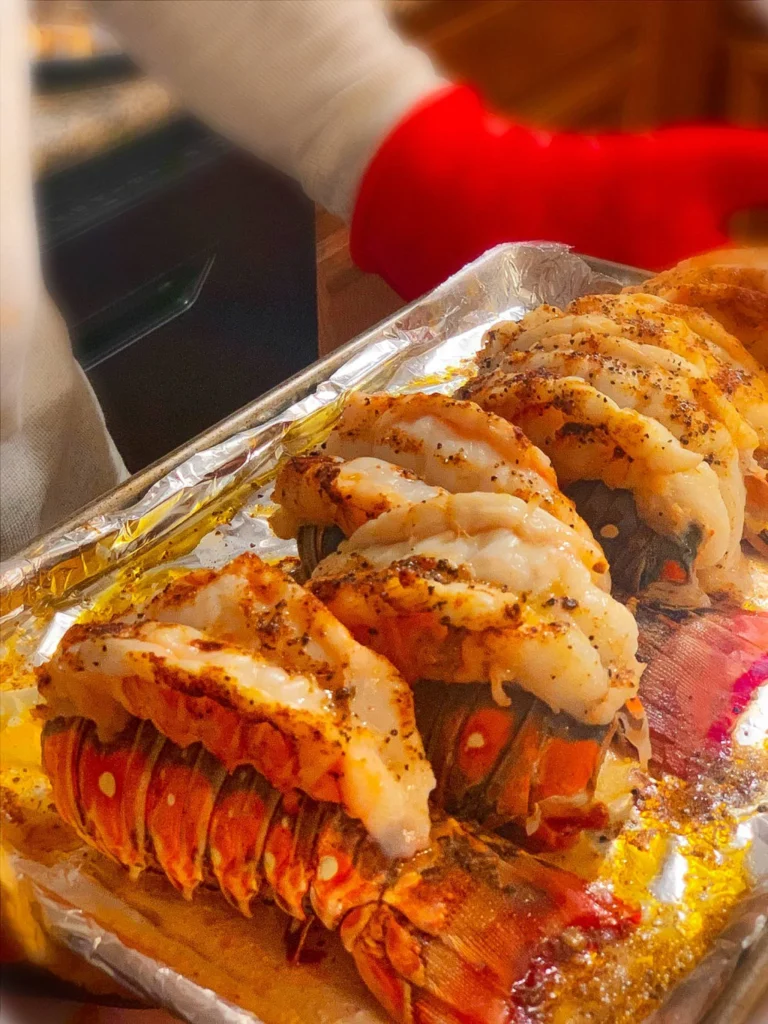
Baking is possibly one of the best ways to prepare lobster tails-cooking lobster tails: it is a great presentation and rich flavors. To bake lobster tails, preheat your oven to 350°F (175°C). Prepare the tails by butterflying them and pulling a little meat up through the shell. Then brush melted butter on the exposed meat and season with your choice of herbs and spices.
Have all the lobster tails prepared and place them on a baking sheet? Bake for about 10-15 minutes or until meat is white and the instant-read thermometer will read 140°F (60°C). Baking brings out flavors that meld exquisitely while ensuring that as it looks impressive, this dish tastes as good.
Can You Cook Frozen Lobster Tails Without Thawing?
While technically it is possible to cook frozen lobster tails without thawing, the general recommendation for the task is that it should not be done. Frozen tails would cook unequally and make the meat tougher. Allow thawing so the meat can cook evenly and will be much softer and tastier. Optimal results are obtained when you plan, to let your lobster tails thaw in the refrigerator before the cooking process.
Occasionally you might not have much time and cook them from frozen; that is completely not a problem since boiling or steaming often ensures the flesh is cooked without toughness. However, it is important to realize that it may increase cooking times, and one has to be very attentive to get a good outcome.
Preparing Lobster Tails for Cooking
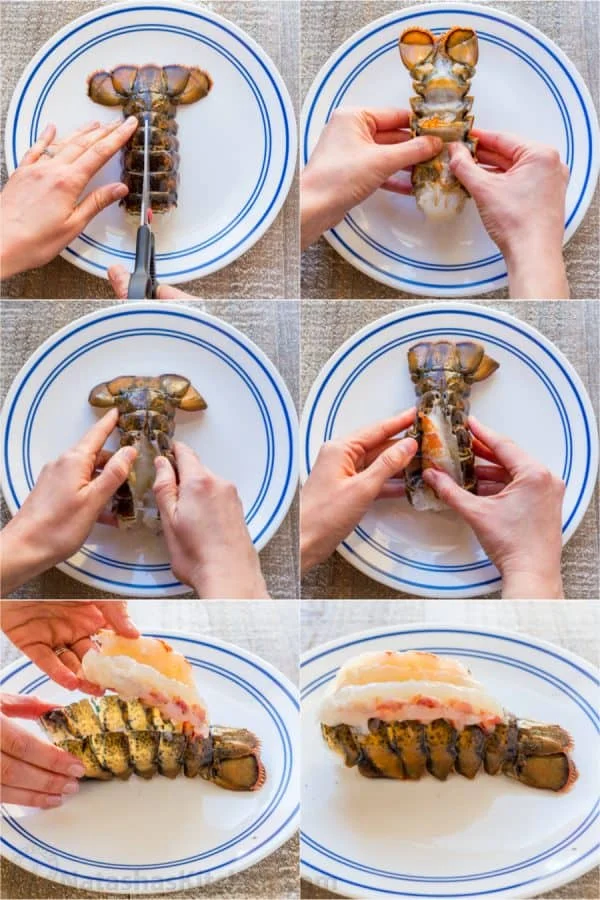
Before cooking lobster tails, prepare the tails. That way one can obtain the best results when preparing lobster tails. Start by rinsing the tails of the lobster under cold water, removing all debris or ice from it. If you use frozen tails, thaw them completely, as done above.
Once the lobster tails are cleaned, you can remove the undershell which may make eating easier and may be aesthetically pleasing. This is done by cutting along the underside of the shell using kitchen shears. That way, after cooking, the meat will be easier to access from this side. Proper preparation ensures that the lobster tails will cook well and will present well on the plate.
How to Thaw Frozen Lobster Tails
Frozen lobster tails thaw best if left overnight in the refrigerator because this slow thawing prevents the meat from sticking to the shell, which is a problem once it is cooked. For quicker use, you can thaw lobster tails more rapidly by putting them in a sealed plastic bag and submerging them in cold water for about an hour.
Lobsters must not be thawed in warm water or at room temperature. Their meat could become uneven and its quality would be affected. So, proper thawing is what is necessary to ensure that the lobster’s great flavor and texture are achieved in a good final product.
Preparing Your Thawed Lobster Tails
But upon thawing the lobster tails, their preparation is quite important before cooking. The steps in this regard are: Simply place them under cold running water to clean off debris and ice in the tail. This will make the tails clean and ready for seasoning.
Move along, or if you haven’t trimmed the undershell yet, take that off and use kitchen shears to cut that shell so that it’s easy to get into when you’re cooking. This prep, aside from making it look pretty, allows for the seasoning to penetrate deeper into the lobster for a flavorful final product.
How To Trim Away Lobster Undershell Before Cooking

One of the best ways to learn how to trim an undershell is to watch a demonstration of it being done. Video tutorials tend to walk you step by step through how to go about the technique with the proper use of kitchen shears, and even some tips on how to cut clean. It can really make this process less intimidating and more approachable for someone just learning how to cook.
Step-by-Step Cooking Instructions
Lobster tails do cook quite straightforwardly when you understand the clear step-by-step instructions. Here is a very quick review of the steps you may use:
Baked Fresh Lobster Tails
- Preheat oven to 350°F (175°C).
- Prepare the tails, butterflying and pulling the meat out.
- Brush with melted butter and season as desired.
- Bake on a baking sheet for 10-15 minutes or till the lobster is white.
Baked Frozen Lobster Tails
- Preheat oven to 350°F (175°C).
- Thaw tails if frozen.
- Butterfly tails and cook like fresh tails.
- Bake according to fresh tail instructions. Increase or decrease time according to the thickness of the tails.
How to Cook Lobster Tails by Boiling
- Place a large pot of well-salted water over high heat and bring to a rolling boil.
- Add lobster tail one at a time to the water and cook for 15 minutes in a 3-quart boiler with salted water.
- Boil for 5 minutes for 5-6 ounce tails, or until meat is opaque.
- Shock in an ice bath to stop cooking.
Grilled Lobster Tails
- Preheat grill to medium-high.
- Butterfly tails and brush with butter.
- Grill shell-side down for 6-8 minutes, or until shells are bright and meat is opaque.
Broiled Lobster Tails (Food Network Kitchen’s favorite method)
- Broiler.
- Butterfly the tails and place them on a baking sheet.
- Brush with butter and season.
- Broil for 4-5 minutes until meat is opaque
Poaching Lobster Tails in Butter
- In a skillet, melt butter with garlic and herbs over low heat.
- Add the lobster tails cut-side up and baste with butter.
- Cover and poach for 10 minutes, until the meat reaches desired temperature.
So What Do We Do with the Leftover Butter?

There will also be leftover flavored butter after poaching tails of lobster in butter. This contains a deep lobster flavor that can easily go on several dishes.
Leftover butter should be stored in the refrigerator in a glass or ceramic container for up to five daysor frozen for longer storage. This flavored butter is perfect for sprinkling vegetables, adding to sauces, or re-poaching lobster tail or shrimp the next time youserve this entree.
Reuse and Flavoring the Butter for Other Dishes
But using all the leftover poaching butter is also a highlight because you can use it for something other than just seafood. Instead of just using it for seafood, drizzle it over steamed vegetables, toss it with pasta, or make risotto using this as a base. You can apply that lobster flavor to so many different dishes and become a resource that people would love to have around.
Or you could just make Lobster Wellington
To be adventurous, how about utilizing lobster tails for a Lobster Wellington? It is an absolutely elegant way of presenting delicate lobster meat in buttery puff pastry. Baste it with some luxury lobster flavor and sprinkle it with flakes of pastry so you are sure to impress at any dinner party.
Thrive Market Blog
For more ideas and inspiration, check out the Thrive Market blog. It’s full of recipes, information on several cooking techniques, and a way to source ingredients, and all of these can boost your culinary skills and knowledge in the kitchen. Whether you are a seasoned pro or just a home cook, their resources can lead you through all the seafood along with much more.







